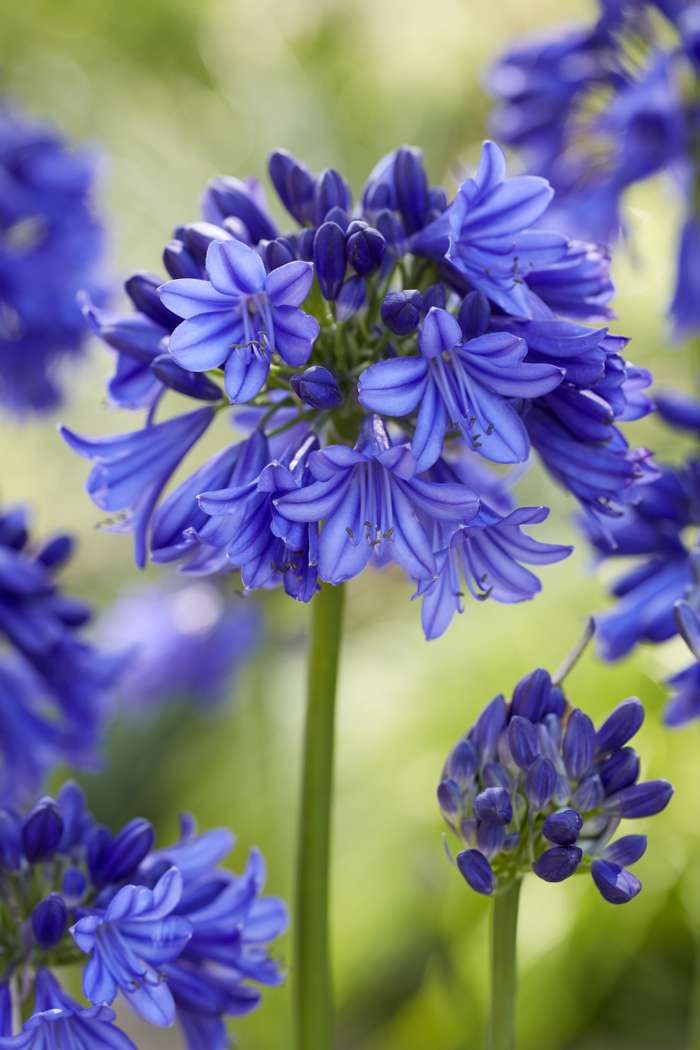Agapanthus Proliferation: Tips for Expanding Your Plant Collection
Agapanthus Proliferation: Tips for Expanding Your Plant Collection
Blog Article
Unleashing the Secret to Successful Agapanthus Cultivation: Tips and Techniques for a Flourishing Yard
In the realm of gardening, cultivating agapanthus successfully requires a critical approach that encompasses different aspects of plant treatment. By recognizing the subtleties of agapanthus cultivation, one can create a setting where these plants prosper and grow abundantly.
Growing Agapanthus: Best Practices
When planting Agapanthus, correct dirt preparation is necessary for guaranteeing successful growth and advancement of these gorgeous flowers. Agapanthus, generally called Lily of the Nile or African lily, prospers in well-draining soil with a somewhat acidic to neutral pH level - Agapanthus. Before growing, it is vital to amend hefty clay dirts with raw material such as compost or peat moss to enhance drain and give crucial nutrients for the plants
To plant Agapanthus, select a place that gets complete sunlight to partial shade, as this will advertise healthy and balanced growth and bountiful flowering. Dig an opening two times the diameter of the plant's origin ball and put the Agapanthus at the very same deepness it was formerly expanding. Delicately backfill the hole with dirt, pushing down strongly to get rid of any kind of air pockets around the origins.
Water the freshly grown Agapanthus thoroughly and remain to keep the soil evenly damp, particularly throughout the plant's energetic growing season. Agapanthus. Applying a well balanced fertilizer once a month can better sustain the plant's growth and flowering. By adhering to these finest techniques for planting Agapanthus, you can develop a stunning display of these fascinating blossoms in your yard
Ideal Soil Issues for Agapanthus
For optimal development and growing success of Agapanthus plants, making certain the dirt problems are suitable is essential. Agapanthus prefers soil that is abundant in nutrients, so incorporating a balanced plant food throughout the growing period can advertise healthy and balanced growth and lively flowers.

Watering and Fertilizing Tips
To make certain healthy development and dynamic flowers, proper watering and feeding strategies are important for effective Agapanthus growing. Agapanthus plants benefit from routine watering, specifically during the growing season.
When it involves fertilizing Agapanthus, a well balanced fertilizer with equal parts nitrogen, phosphorus, and potassium can be used in the spring to promote healthy and balanced growth and flowering. Slow-release plant foods are suitable for giving nutrients gradually over a prolonged duration. Avoid over-fertilizing, as this can result in too much vegetation development at the cost of blossoms.
Furthermore, incorporating natural matter like compost right into the dirt can boost nutrient degrees and boost soil structure, helping in the overall wellness of the Agapanthus plants. By adhering to these watering and fertilizing suggestions, gardeners can ensure their Agapanthus plants prosper and produce spectacular screens of blossoms.
Trimming and Deadheading Strategies
Appropriate trimming and deadheading techniques play an important duty in maintaining the health and wellness and appearances of Agapanthus plants, matching the essential methods of watering and feeding for successful growing. Trimming Agapanthus entails removing spent blossom heads, yellowing or dead fallen leaves, and general shaping of the plant to advertise far better webpage growth. Deadheading, the procedure of eliminating faded flowers, not just boosts the plant's appearance however additionally urges further flowering.
When deadheading Agapanthus, it is recommended to clip off the flower stem at the base using sharp, clean shears. This procedure reroutes the plant's power from seed manufacturing back into origin and foliage growth, promoting a healthier and much more robust plant. Normal deadheading can extend the blooming period of Agapanthus and avoid self-seeding, which can bring about congestion.
In regards to pruning, Agapanthus generally gain from a light trim after flowering to clean up the plant and encourage fresh development. Cutting down the invested flower stems and removing any type of dead or broken vegetation aids maintain website link the plant's vitality and total appearance. However, it is necessary to stay clear of cutting into the crown of the plant, as this can weaken its health and wellness.

Protecting Agapanthus From Pests and Diseases
Applying efficient bug and condition management methods is vital to safeguarding the wellness and vigor of Agapanthus plants in growing. One common bug that impacts Agapanthus is the Agapanthus borer, a caterpillar that passages right into the plant, creating damage to the fallen leaves and blossoms.
Along with insects, Agapanthus are susceptible to diseases such as root rot and fungal fallen leave areas. These problems can commonly be protected against by ensuring proper drain and avoiding overwatering. If signs of disease show up, influenced parts of the plant must be promptly eliminated to avoid additional spread. Fungicides may also be utilized as a therapy action, adhering to the maker's directions carefully. By staying alert and dealing with bug and condition concerns quickly, gardeners can help their Agapanthus thrive and thrive.

Conclusion
In final thought, successful farming of agapanthus requires appropriate planting methods, optimal soil conditions, appropriate watering and fertilizing, normal pruning and deadheading, and security from Check This Out insects and diseases. By following these methods and ideas, gardeners can make sure a growing yard filled with gorgeous agapanthus flowers. Agapanthus. Keep in mind to maintain regular care and attention to information to promote the health and wellness and durability of these magnificent plants
When growing Agapanthus, appropriate dirt preparation is necessary for guaranteeing successful development and development of these beautiful flowers.Water the freshly planted Agapanthus thoroughly and continue to maintain the dirt equally damp, particularly throughout the plant's active expanding season.For optimal growth and growing success of Agapanthus plants, guaranteeing the soil conditions are perfect is critical. When planting or hair transplanting Agapanthus, make certain the dirt is well-prepared to provide the necessary structure for the plants to develop themselves efficiently. One common insect that affects Agapanthus is the Agapanthus borer, a caterpillar that tunnels into the plant, causing damages to the fallen leaves and flowers.
Report this page